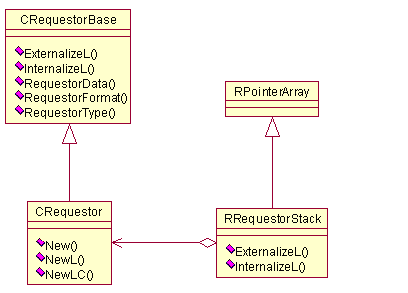Privacy Requester Classes
This document describes the classes that were used in earlier versions of the Symbian platform to identify the requester of location information to the LBS subsystem.
Use of these classes is now optional. It is recommended that you still use them if your LBS applications must run on devices based on earlier versions of Symbian.
Purpose
The privacy requester classes were defined as part of the Location Acquisition API before platform security was introduced in Symbian OS v9. On all platforms based on Symbian OS v9 and later, client applications are required to have the Location capability to use the Location Acquisition API. Platform security checks fulfil much of the role of the privacy requester classes.
Privacy requester classes
This section describes the privacy requester classes.
Class description
Figure 1 shows the Privacy classes provided by the Location Acquisition API.
A requester is defined as an agent that requests location information. There are two requester types:
-
Service requesters
A service requester represents any terminal or network application or service.
-
Contact requesters
A contact requester represents an individual person requesting the location.
CRequestor::RequestorType() defines the type of the requester. The requester information is sent to Location Server before requesting location estimates.
Defining requesters
Requesters may be defined in one of two ways:
Defining a single requester
A single requester is defined by calling RPositioner::SetRequestorL() . The method signature is: TInt SetRequestor(CRequestor::TRequestorType aType, CRequestor::TRequestorFormat aFormat, const TDesC& aData) .
The requester is defined directly by the values supplied to the function’s parameters. This case is used by applications or services if they are the only request source.
CRequestor::TRequestorType defines the type of requester: a service or contact.
CRequestor::TRequestorFormat defines the format of the requester identifier passed in aData : an application name, contact, email address etc.
Defining a stack of requesters
If an application requests location information on behalf of another agent or agents, it can specify the chain of requesters by calling a second variant of RPositioner::SetRequestorL() . The method signature is: TInt SetRequestor(const RRequestorStack& aRequestorStack)
RRequestorStack is a container for a list of the requesters on behalf of which the request is made. Each requester in the stack is represented by a CRequestor class.
Note: Regardless of the number of requesters, there is always one service requester, because the application executing the location request must be always shown, even if it made the request on behalf of a contact requester. For this reason, the last item in the requester stack must always be a service requester (type CRequestorBase::ERequestorService ).
Copyright ©2010 Nokia Corporation and/or its subsidiary(-ies).
All rights
reserved. Unless otherwise stated, these materials are provided under the terms of the Eclipse Public License
v1.0.
